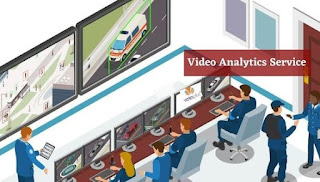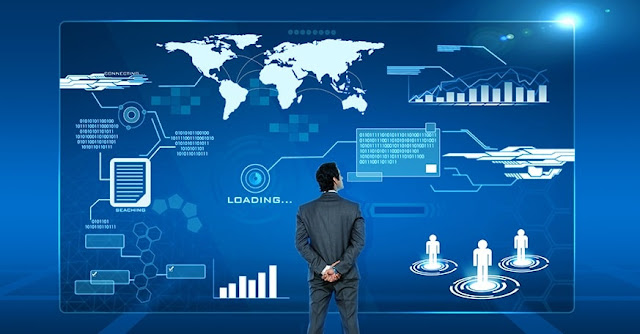Video Analytics and Machine Learning: A Powerful Duo for Data Insights
Video is an incredibly rich and
information-dense medium. However, the sheer scale of visual data produced
every minute can make analyzing and unlocking hidden insights from videos an
overwhelming task. This is where integrating video analytics with machine
learning comes into play.
By applying computer vision and AI
algorithms to automatically process and understand video content, a whole new
dimension of actionable business intelligence can be attained. In this article,
we will explore how video analytics enhances machine learning and vice versa to
generate meaningful data-driven insights.
Here we will discuss the opportunities
these technologies provide as well as some of the key challenges. Examples of
innovative applications across various industries will also be highlighted.
Ultimately, how this potent technology duo can empower organizations will be
examined.
What is Video Analytics?
Video analytics is the process of
extracting meaningful insights and information from videos using advanced
computer vision and machine learning techniques. With the growing usage of
surveillance cameras, smartphones and other intelligent devices that can
capture videos, there is a massive amount of untapped video data available.
Video analytics helps organizations analyze this video data to extract valuable
insights.
It can detect objects, identify people,
analyze their activities and interactions, track events, recognize
abnormalities and trigger alerts - all in real-time. Metrics like customer
counts, queue times, traffic patterns can be measured. With machine learning,
video analytics applications are becoming more accurate and powerful over time
in autonomous video understanding.
Video Analytics: Unveiling the Basics
Want to learn the fundamentals of video analytics and how it works? Here are the basics you need to know. At a high
level, video analytics systems go through three main stages - video intake,
analysis and insight generation. First, live or recorded videos are fed into
the system from cameras or storage. Then comes the analysis stage where
computer vision and machine learning algorithms detect and recognize objects,
behaviors, events in real-time.
Algorithms are trained to understand visual
context. Finally, the meaningful insights derived from analysis are presented
to users through detailed reports and dashboard visualizations. Metrics like
traffic patterns, queue lengths, customer movement etc. are measured. This
gives organizations deep operational intelligence from their video data.
Machine Learning: Revolutionizing Video Data
Machine learning has been a true game
changer for video analytics. Traditional video analysis relied on human-defined
rules which could only detect pre-programmed behaviors and had limitations.
With machine learning, video analytics systems are now capable of autonomous
video understanding. Deep learning algorithms are trained on massive labeled
video datasets to learn the complex visual patterns and context in an
end-to-end manner.
They can recognize a diverse range of
objects and behaviors without being explicitly programmed. As the systems
analyze more real-world video data over time, their accuracy and capabilities
improve continually. Machine learning has boosted video analytics from simple
detection to truly intelligent visual perception, enabling unprecedented
video-based insights.
The Synergy between Video Analytics and Machine Learning
|
Video Analytics |
Machine Learning |
Synergy |
|
Provides massive volumes of video data required for training
sophisticated machine learning models. |
Powers the advanced analytical abilities of video analytics
solutions by enabling automatic learning and discovery of visual patterns
without handcrafted rules. |
As machine learning models analyze more video data over time, they
gain deeper insights and evolved capabilities, continually improving video
analytics abilities. |
|
Leverages computer vision and analytics capabilities to extract
meaningful metadata, detections and insights from video content. |
Applies deep learning algorithms trained on massive labeled video
datasets to gain human-level visual understanding abilities. |
Their combined use creates a flywheel effect wherein both video
analytics and machine learning capabilities are continuously enhanced as more
real-world data is processed. |
|
Delivers actionable operational intelligence by analyzing video
data in real-time. |
Achieves unprecedented levels of visual perception beyond
capabilities of traditional rules-based systems. |
This symbiotic alliance is truly revolutionizing how organizations
can leverage untapped value from video data assets for more informed decision
making. |
Applications across Industries
Video analytics powered by machine learning
has widespread applications across industries due to the multiplicity of use
cases:
- Retail: Track customer traffic, queue length, identify
bottlenecks.
- Smart Cities: Detect crowds, abandoned objects, traffic
violations. Optimize traffic lights.
- Banking: Detect queue times, enhance security with facial
recognition.
- Transportation: Monitor vehicle counts, detect wrong-way
drivers, speed violations.
- Factories: Track resource utilization, identify maintenance
issues, spot defects.
- Stadiums: Analyze fan engagement, monitor entry/exits for
safety.
- Healthcare: Monitor patients, track staff movement, flag
anomalies.
The diverse capabilities have made them an
invaluable intelligent video solution for organizations to gain actionable
insights from video to streamline operations and decision making.
Challenges and Solutions
While video analytics and machine learning
together provide immense opportunities to gain valuable insights from video
data, there are still many challenges that need to be addressed. Processing the
massive amounts of visual data generated every second requires powerful
computing capabilities. Making sense of this unstructured video content and
extracting meaningful information is an arduous task. Changes in environmental
conditions or object appearances also affect accuracy over time.
However, advances in cloud computing, GPU
processors and deep learning frameworks are helping overcome these obstacles.
Automated feature engineering and transfer learning techniques are improving
model performance. Open-source video analytics and ML libraries are also lowering
the bar to experimentation and deployment. With continued innovation, we will
unlock even greater value from video through this dynamic technology
combination.
Future Trends and Innovations
Video analytics combined with machine
learning is a fast evolving field. With exponentially growing amounts of video
data being generated daily, we can expect to see more lightweight and efficient
deep learning models that can run edge devices and cameras in real-time.
Computer vision and natural language processing will increasingly integrate to
enable querying video content verbally.
Advanced generative models may
automatically generate captions and playlists of important moments.
Unsupervised learning techniques will further reduce labeling requirements.
Blockchain integration may facilitate decentralized video streaming and
analytics across organizations. And as datasets become larger, transfer
learning will unlock ever more accurate and generalized insights from visual
content through this powerful duo of technologies.
Conclusion
Video analytics combined with machine
learning algorithms have massive potential to generate actionable and
contextualized insights from visual data at scale. As these technologies
continue to advance rapidly, organizations across industries will be able to
leverage video data more effectively for various applications such as
surveillance, retail, and manufacturing.
To stay ahead of the curve, start exploring
how you can generate value from your business video data through integrated
video analytics and machine learning solutions. Contact us today to discuss how
we can help you deploy effective video analysis and AI models to gain
far-reaching strategic benefits from your visual assets.



Comments
Post a Comment